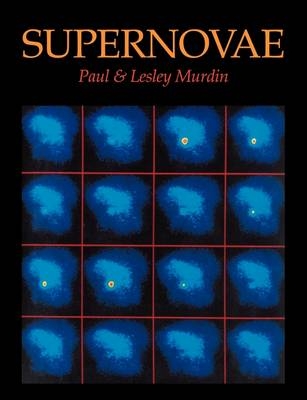
Supernovae
Seiten
2011
|
2nd Revised edition
Cambridge University Press (Verlag)
978-0-521-18979-8 (ISBN)
Cambridge University Press (Verlag)
978-0-521-18979-8 (ISBN)
This revised 1985 edition captures the flavour of ancient astronomy and lays out the accidents, coincidences, false leads and flashes of inspiration that followed as astronomers grasped the implications behind the rare appearance of supernovae. Two supernovae made scientists aware that the stars changed and could be studied like everything else.
Supernovae are gigantic stellar explosions. The effects of these rare events pervade astronomy, creating and spreading the chemical elements, triggering the formation of new stars, creating black holes and pulsars. Originally published in 1978 and first published by Cambridge as this revised edition in 1985, is the story of supernovae. It captures the flavour of ancient astronomy and lays out the accidents, coincidences, false leads and flashes of inspiration that followed as astronomers grasped the implications behind the rare appearance of supernovae. Two supernovae, seen in 1572 and 1604, made scientists aware that the stars changed and could be studied like everything else. Eventually, modern astronomers came to link supernovae with black holes, pulsars, and even with the creation of the chemical elements. The whole entertaining story is told clearly, in non-technical language, showing the triumph of human imagination as we discovered our place in the universe.
Supernovae are gigantic stellar explosions. The effects of these rare events pervade astronomy, creating and spreading the chemical elements, triggering the formation of new stars, creating black holes and pulsars. Originally published in 1978 and first published by Cambridge as this revised edition in 1985, is the story of supernovae. It captures the flavour of ancient astronomy and lays out the accidents, coincidences, false leads and flashes of inspiration that followed as astronomers grasped the implications behind the rare appearance of supernovae. Two supernovae, seen in 1572 and 1604, made scientists aware that the stars changed and could be studied like everything else. Eventually, modern astronomers came to link supernovae with black holes, pulsars, and even with the creation of the chemical elements. The whole entertaining story is told clearly, in non-technical language, showing the triumph of human imagination as we discovered our place in the universe.
Preface; 1. Supernovae in space and time; 2. Guest stars; 3. The Renaissance supernovae; 4. Supernovae in other galaxies; 5. The Crab and its mysteries; 6. Discovering pulsars; 7. Supernova remnants; 8. Types of supernovae; 9. The making of a neutron star; 10. Supernovae in binary stars; 11. Creation of the elements; 12. Cosmic rays; 13. Black holes from supernovae; 14. Final chapter; Booklist; Index.
| Erscheint lt. Verlag | 28.4.2011 |
|---|---|
| Zusatzinfo | Worked examples or Exercises |
| Verlagsort | Cambridge |
| Sprache | englisch |
| Maße | 189 x 246 mm |
| Gewicht | 350 g |
| Themenwelt | Naturwissenschaften ► Physik / Astronomie ► Astronomie / Astrophysik |
| ISBN-10 | 0-521-18979-9 / 0521189799 |
| ISBN-13 | 978-0-521-18979-8 / 9780521189798 |
| Zustand | Neuware |
| Haben Sie eine Frage zum Produkt? |
Mehr entdecken
aus dem Bereich
aus dem Bereich
Grundlagen, Anwendungen in Astrophysik und Kosmologie sowie …
Buch | Softcover (2022)
Springer Spektrum (Verlag)
CHF 69,95
die Geschichte und Erforschung unserer Galaxie
Buch | Hardcover (2023)
C.Bertelsmann (Verlag)
CHF 40,80
Von Hubble-, James-Webb- und anderen Großteleskopen bis zu …
Buch | Softcover (2024)
Springer (Verlag)
CHF 32,15


